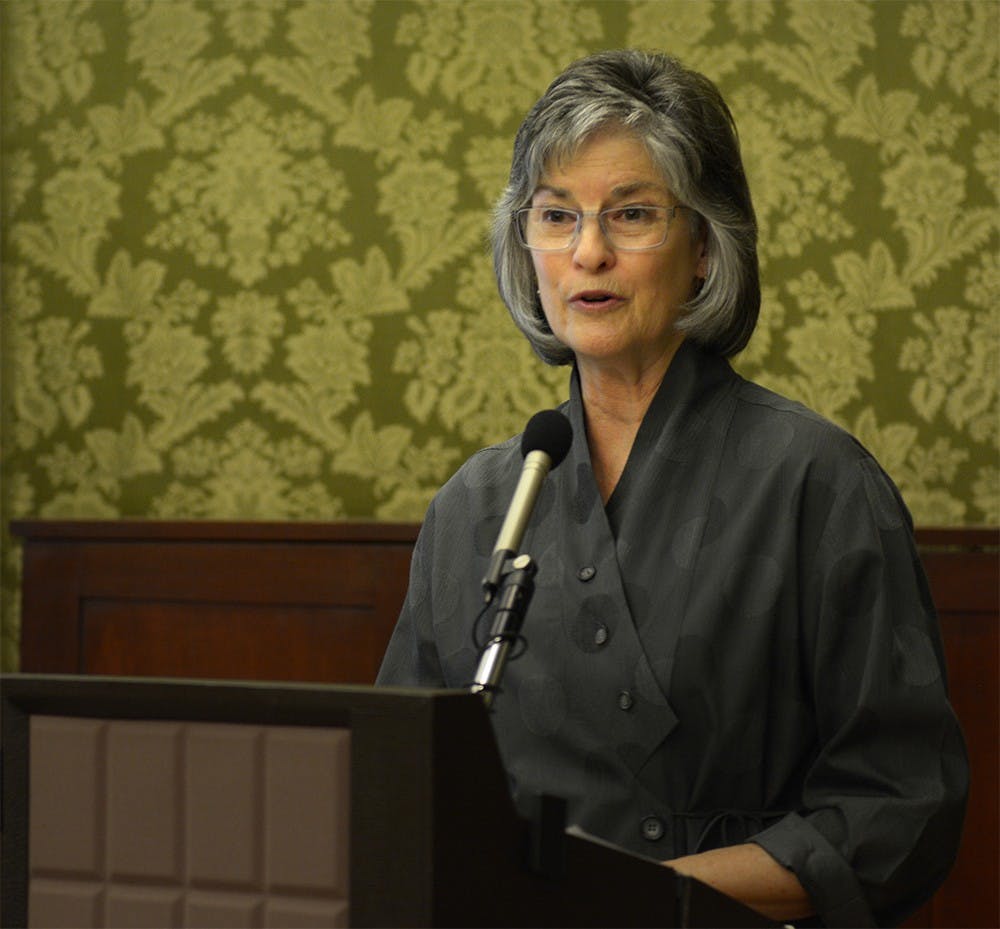Loker said that was the idea behind the exhibit “One Hundred Books Famous in Children’s Literature,” which Loker organized at the Grolier Club last year. She spoke about the exhibit at the Lilly Library yesterday in conjunction with their exhibit of the same name.
Loker began her talk after an introduction by Joel Silver, director of the Lilly Library. Silver said the Grolier Club and the library have a historical connection that goes beyond these similar exhibitions.
“The Grolier Club in New York is the preeminent book-collecting club in the United States,” Silver said. “It was founded in 1884, and J.K. Lilly Jr., whose collection came to the Lilly Library with the founding collection that created the library, was a member of the Grolier Club.”
The lecture that followed included a slideshow, a virtual tour of the Grolier Club’s exhibition, which ran through February 2015. Loker led the tour after saying the talk would be more than just a session about the exhibition.
“I want to bring to you some of the spirit of it,” Loker said. “I want to bring to you what I think touches all of us about children’s literature in the heart. It’s a very heartfelt subject. The way I want to do that is I want to tell you a story.”
The true story Loker told began on a snowy evening in December in New York City. Loker said she remembered walking through the Grolier Club a final time the night before the exhibition opened, with the sounds of traffic in the background.
“This exhibition had been five years in the making, full-time,” Loker said. “As we’re all standing in this imaginary place in the Grolier Club, I see that this exhibition is fully installed, and it seems like a minor miracle.”
Before jumping into the rest of the story, Loker said the selection process was challenging and the final choice, between childhood favorites “Mary Poppins” and “Pippi Longstocking,” was a difficult discussion for the scholars and others in charge.
“We were all surprised at how challenging the selection process was, but we were excited as well — boy did we have fun,” Loker said.
The next part of the talk took attendees through the exhibition. Loker outlined each of the categories from faith and learning to fantasy, among a few others.
In the category of animals, which Loker said was one of her personal favorites, were books such as “Peter Rabbit” and “Charlotte’s Web,” which often looked at the human side of nonhuman characters.
“Starting centuries ago with ‘Aesop’s Fables,’ authors have often viewed animals with human sentiments as well as the ability to walk upright or speak out loud,” Loker said. “Anthropomorphized animals are a time-honored method of conveying literary truths that allow children to learn more easily and to better retain memories of the stories.”
Loker ended the talk by expressing how highly she views children’s literature. Loker spoke first about a piece of art by illustrator Walter Crane depicting nine nursery rhymes, which she said served as her inspiration for the exhibition.
“It symbolizes the most important thing I know about children’s literature,” Loker said. “Literature for children is forged from the same enduring elements as literature for adults: powerful narrative, unforgettable characters, illustration that stirs the imagination and insights that engage the mind and the heart.”
Rachel James, community member and former school librarian, said that statement resonated with her.
“(Loker) really hit it on the nose: When you have really good fiction, that’s what it does,” James said. “Children’s books have the power to touch the child in everybody.”






